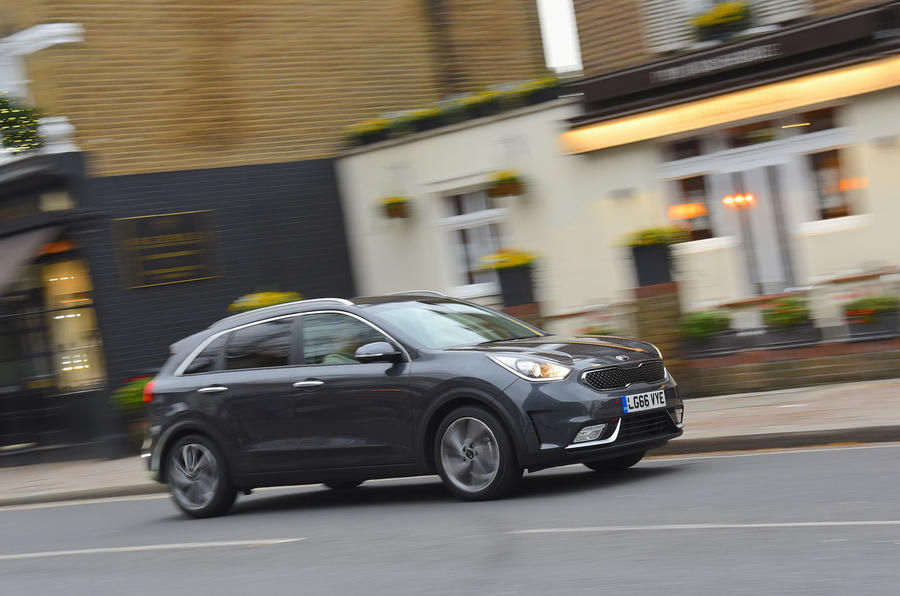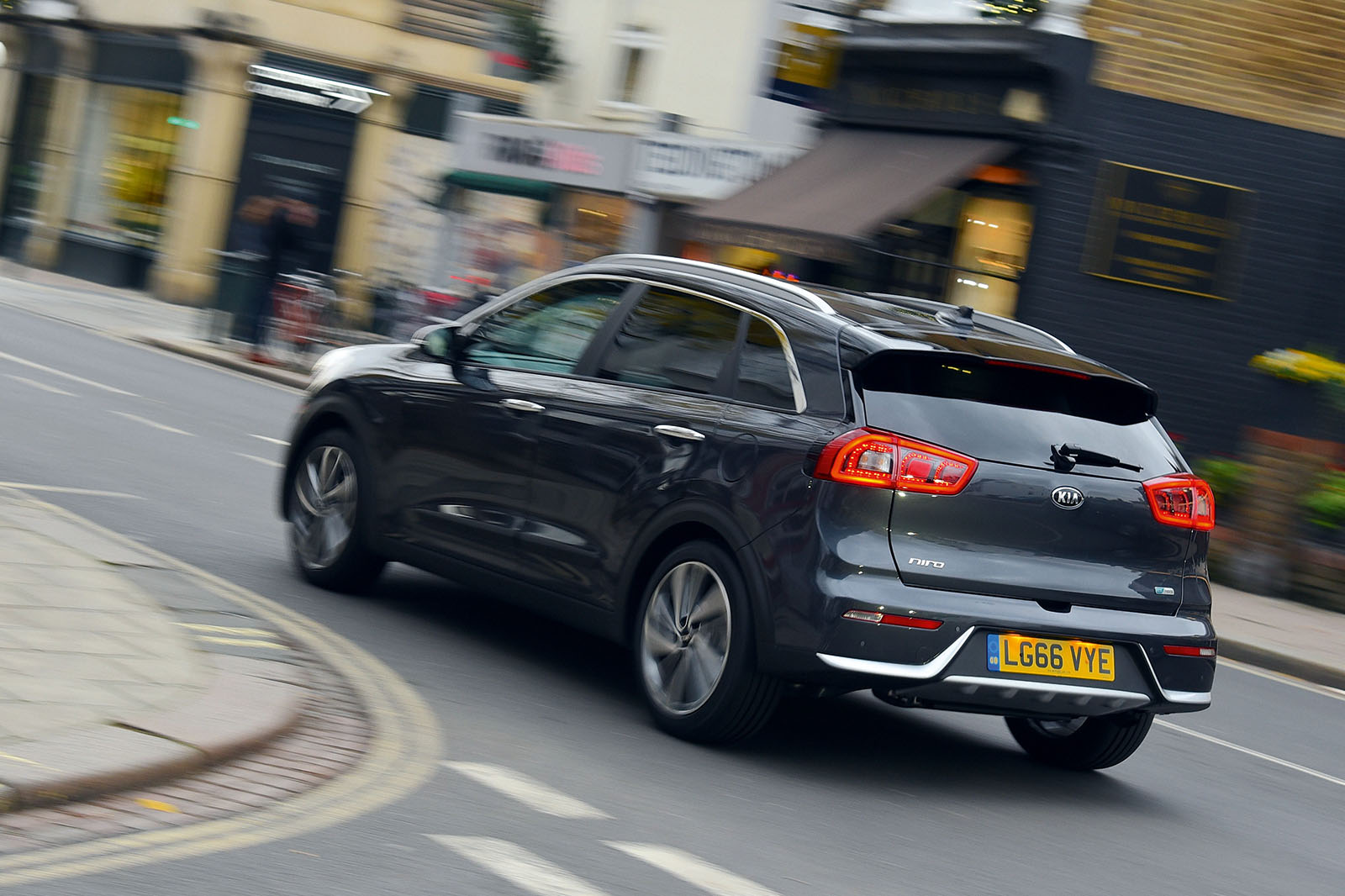Kia Niro long-term test review: carrying capacity test

It's easy to load heavy stuff but mind the payloadSorry about the weight: a bricklaying mission takes our hybrid crossover to the max
Okay, so a small hybrid crossover probably wasn’t the ideal car to scrounge for my week off.
Let me explain: I’d set myself the rather ambitious task of building a brick wall in my garden for a new greenhouse to sit on. The job involved carting many, many bags of sand and cement from a DIY store back to my gaff. Custodian Darren Moss kindly offered the Niro’s services and, well, it was that, a Morgan 3 Wheeler or a Renault Twizy. Easy decision.
Anyway, each bag weighed 25kg, so after some quick back-of-a-fag-packet calculations, I worked out that I could legally carry 13 bags at once. To put that in some sort of context, our Audi SQ7 long-term test car could have managed 31 bags, and even our 1.0-litre Volkswagen Golf would have taken 17. That was the difference between one, two or three round trips for me, so clearly the Niro isn’t the ideal choice if you’re planning lots of home improvements. In fact, even carrying four well-fed passengers could easily tip the Niro over its maximum gross weight limit.

But the Niro’s boot is suitably practical in other ways. Lifting heavy things in and out is easy because there’s no big lip at the entrance, and the boot floor is (for me, at least) roughly at waist height. Fold down the rear seatbacks and they lie parallel with the floor without leaving any irritating steps or crevices, so you can simply slide things without having to manoeuvre over obstacles.
In other respects, the Niro is a better car than I’d been led to expect, too. Kia finally seems to be making some progress improving the weighting and positivity of the controls. The steering is a long way from perfect, but it’s a noticeable step forward compared with the gloopy and imprecise racks on, say, the Cee’d or Sportage. And despite all the weight I was dragging around, the Niro still averaged a very creditable 47mpg over the course of my week off. WN
KIA NIRO 1.6 GDI HEV 3 DCT
Price £24,695 Price as tested £25,240 Economy 45.6mpg Faults Battery drained Expenses None Mileage 3012
PREVIOUS REPORTS:
The Niro has been put through our True MPG test, which is much more accurate than the trip computer’s readout. The result suggests that 50.1mpg is achievable. That’s some way adrift of the 64.2mpg Kia claims for the hybrid. Mind you, the rival Toyota Prius fares worse, recording a 50.5mpg True MPG figure compared with a claimed 85.6mpg. DM
KIA NIRO 1.6 GDI HEV 3 DCT
Price £24,695 Price as tested £25,240 Economy 45.6mpg Faults Battery drained Expenses None Mileage 2705
PREVIOUS REPORTS:
Kia claims the petrol-electric Niro hybrid can achieve combined fuel economy of 64.2mpg.
I devised a basic test to see what the car is capable of in the real world. I planned to drive 100 miles from my home in Sunbury-on-Thames to visit my parents in Northamptonshire, a journey that includes motorways, dual carriageways and urban roads.
On the outward leg I’d use some ‘hypermiling’ driving techniques in a bid to tease out the fuel economy, but for the return leg, I’d drive the Niro in a more carefree fashion.
Autocar’s resident eco-driving obsessive offered advice, namely to anticipate the road ahead, avoid sudden acceleration or deceleration and stick to electric power at lower speeds. I also travelled at night when there was less traffic.
I measured the fuel economy on the trip computer. It isn’t always the last word in accuracy, but it gave me a comparison. The result was a disappointing 48.5mpg for the outward leg and 45.0mpg for the return trip. A fluke, perhaps? To find out, we’re putting a Niro through our more thorough True MPG test. Stand by for the results.
PREVIOUS REPORTS
Battery issues
Photoshoots are part and parcel of being on our fleet. Our cars are shot in detail when they first arrive and again before they leave, and it’s a chance for us to catalogue everything about our new car.
For the Kia Niro, we decided to do part of the shoot outside, around our offices near Twickenham. But for the ‘detail’ pictures we moved to the security and warmth of our studio, where the car sat with its lights on and the ignition off for perhaps half an hour. And in the process we managed to completely flatten the 12V battery and leave the car stranded.
I received a call from snapper Will Williams, initially to say that, having finished with the car, it was showing a brake error message and wouldn’t start – and therefore couldn’t be moved. After giving the Niro some time to ‘reset’ itself, Will called back to say he’d managed to roll it out of the studio, but the interior lights and other electrics were playing up; even the door locks wouldn’t work. Before long, the car was completely dead, and no one was quite sure whether trying to jump start a hybrid was a good idea.

A call to Kia resulted in our Niro being towed away by the RAC to be diagnosed professionally. The explanation we received from Kia later that day confirmed a drained 12V battery, which was duly recharged. Kia’s diagnostics system revealed no further issues.
Now that we’ve got the car back, I’m slowly learning to adapt to running a hybrid car: how to use the regenerative brakes to pump friction energy back into the battery, and learning where the acceleration cut-off between fully electric and electric/petrol engine power lies.
We’re still working on our fuel economy, though, because the 45.6mpg we’re seeing at the moment isn’t particularly impressive. We’ll see if a couple of motorway runs to see family and friends in the next few weeks can improve that number, and I’ll be taking a leaf out of resident frugal driving expert Tim Dickson’s big book of hyper-miling tips to find out what’s achievable.
KIA NIRO 1.6 GDI HEV 3 DCT
Price £24,695 Price as tested £25,240 Economy 45.6mpg Faults Battery drained Expenses None
Comments
Post a Comment